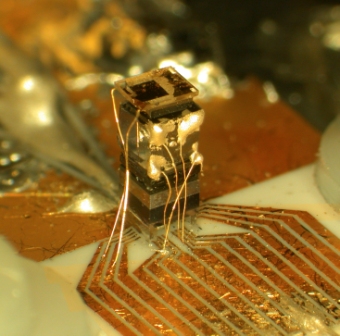Atomic Clocks

How They Work
Atomic clocks use the basic principles used in other mechanical clock. That is, they measure oscillations as a way to determine the time. But the oscillations in an atomic clock do not come from a pendulum in the essence that one would generally expect but from the oscillations of laser cooled atoms. By cooling cesium atoms to almost absolute zero the movements that occur in them can be precisely measured and have produced a standard for the second that is accurate to one second in 60 million years. The precision with which these clocks work aids in the use of GPS systems which rely on accurate time to measure distances. Also, by endeavoring to create a clock that is even more accurate we could more accurately measure the distances between galaxies.
Microsized Atomic Clocks
Recent advances in atomic clock technology have given rise to microscopic atomic clocks that could soon replace many of the clocks in computers and can even be put into a wristwatch. The picture at the top of this page is of an atomic clock about the size of a grain of rice. While these clocks may not be as accurate as the massive clock that is used for the measureing the Standard Second they are still better at keeping time than anything that came before them.
NIST and the Standard Second
The National Institute of Standards and Technology (NIST) has utilized the accuracy of atomic clocks to create the definition of the second in terms of actual physical quantities rather than on the rotation of the earth. This standard is defined as "9,192,631,770 periods of the radiation corresponding to the transition between the two hyperfine levels of the ground state of the cesium-133 atom." While producing a measurment as accurate as this may seem like it takes too much bother the accuracy of the second is actually a critical component in power distribution, communication systems, and transportation. Without accurate time coordinating all of this would not be possible and civilization as we know it would not be possible.